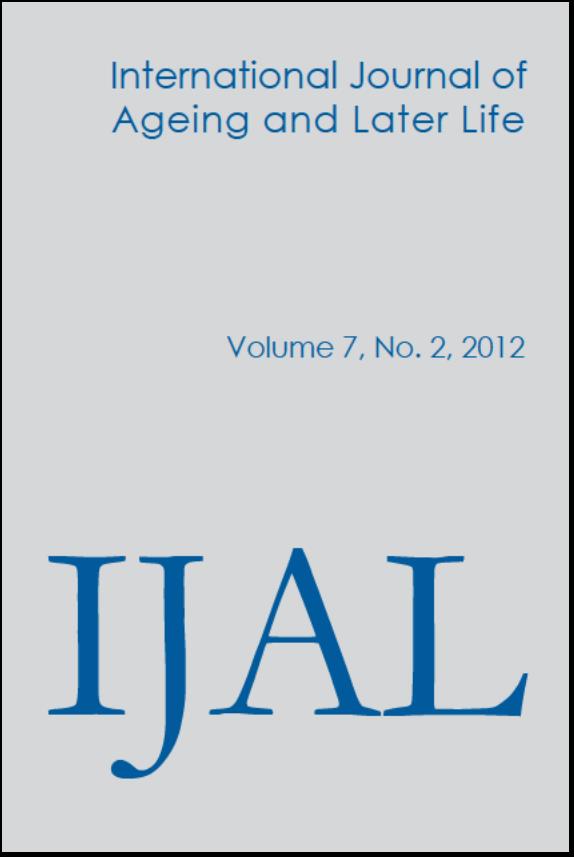No Country for Old Men: a search for masculinity in later life
Main Article Content
Abstract
As several recent studies have shown, contemporary scholarship on masculinity in later life is beset with significant limitations that mirror social and cultural aspects of the very subject that it is meant to study. Reflecting the culture at large, studies of masculinity have presupposed an unspoken, static image of midlife men as the criterion for manhood. This essay reads the protagonist of No Country for Old Men, Sheriff Ed Tom Bell, in the context of masculinity studies, age studies, and the evolution of the American Western. Both Cormac Mcarthy’s novel and the Coen brothers’ film adaptation will be addressed. We argue that, as a man who becomes deprived of the traditional props of ageless male identity, Bell offers an unexpected and intriguing instance of the search for late-life masculine identity. By the end of No Country for Old Men, Bell has departed from the traditional masculinity scripts of the American Western. He is an aging, ineffectual cowboy who has retired, renounced the violence that sustained his male dominance, and lost the moral certainty that ensured his identity. Bell is no longer certain of who he is - which leaves him free to find out what it might mean to be an old man.
Metrics
Article Details

This work is licensed under a Creative Commons Attribution-NonCommercial 3.0 Unported License.
Since 2020 the International Journal of Ageing and Later Life uses a Creative Commons: Attribution license, which allows users to distribute the work and to reform or build upon it without the author's permission. Full reference to the author must be given.
References
Achenbaum, A. (2013). Robert Butler, M.D.: Visionary of Healthy Aging. New York: Columbia University Press.
Bakhtin, M. (1984). Problems of Dostoevskys Poetics. M. Holquist (ed.), C. Emerson (trans.). Minneapolis, MN: University of Minnesota Press.
Butler, J. (1990). Gender Trouble: Feminism and the Subversion of Identity. New York: Routledge.
Butler, R. (1963). The life review. Psychiatry 26: 65–76.
Calasanti, T. (2004). Feminist gerontology and old men. Journal of Gerontology: Social Sciences 59(6): 305–314. DOI: 10.1093/geronb/59.6.S305
Campbell, H., Bell, M. & Finney, M. (eds.). (2006). Country Boys: Masculinity and the Country Life. University Park: Pennsylvania State University.
Cawelti, J. (1971). The Six-Gun Mystique. Bowling Green, OH: Bowling Green University Press.
Chivers, S. (2011). The Silvering Screen. Toronto: University of Toronto Press.
Coen, J. E. (dir.) (2007). No Country for Old Men. DVD. Miramax Films.
Cornell, D. (2009). Clint Eastwood and Issues of American Masculinity. New York: Fordham. DOI: 10.5422/fso/9780823230129.001.0001
Cremean, D. (2010). For whom Bell Tolls: Sheriff Bell as spiritual hero. In L. C. King, R. Wallach & J. Welsh (eds.), No Country for Old Men: From Novel to Film (pp. 21–31). Plymouth: The Scarecrow Press.
De Boever, A. (2009). The politics of retirement: Joel and Ethan Coens No Country for Old Men after September 11. Image & Narrative 10(2): 135–149.
Dorfman, A. (1983). The Empires Last Clothes. New York: Pantheon. Eastwood, C. (dir.) (1992). Unforgiven. DVD. Warner Home Video.
Ellis, J. (2011). Do you see? Levels of ellipsis in No Country for Old Men. In S. L. Spurgeon (ed.), Cormac McCarthy: All the Pretty Horses, No Country for Old Men, The Road (pp. 94–116). London: Continuum.
Hoppenstand, G. (2008). The Lone Ranger: Justice Outside the Law. Available on: http://www.npr.org/templates/story/story.php?storyI=18073741 (Accessed: October 2, 2011)
Horton, A. (1974). Ken Kesey, John Updike, and the Lone Ranger. Journal of Popular Culture 8(3): 570–578. DOI: 10.1111/j.0022-3840.1974.0803_570.x
Lawrence, J. S. (2009). The Lone Ranger: Adult legacies of a juvenile western. In P. Rollins & J. Oconnor (eds.), Hollywoods West: The American Frontier in Film, Television, and History (pp. 81–98). Lexington, KY: University of Kentucky Press.
McCarthy, C. (2005). No Country for Old Men. New York: Random House. Mellon, J. (2008). Spiraling downward: America in Days of Heaven, In the Valley of Elah, and No Country For Old Men. Film Quarterly 61(3): 33–37.
Peebles, S. (2004). Bean, bell, and the efficacy of Texas Lawmen: Old Timers in No Country for Old Men. The Journal of the American Studies Association of Texas 35: 29–43.
Peebles, S. (2009). Hold still: Models of masculinity in No Country for Old Men. In L. C. King, R. Wallach & J. Welsh (eds.), No Country for Old Men: From Novel to Film (pp. 124–138). Plymouth: The Scarecrow Press.
Peterson, D. (2011). New west or old? Men and masculinity in recent fiction by Western American men. Western American Literature 46(1): 74–88. DOI: 10.1353/wal.2011.0032
Spector-Mersel, G. (2006). Never-aging stories: Western hegemonic masculinity scripts. Journal of Gender Studies 15(1): 67–82. DOI: 10.1080/09589230500486934
Swinnen, A. (2011). Seksualiteit en de crisis van het mannelijke subject op leeftijd in Een tweede jeugd. In A. Swinnen (Ed.), Seksualiteit van ouderen: Een multidisciplinaire benadering (pp. 291–313). Amsterdam: Amsterdam University Press. DOI: 10.5117/9789089641823
Thompson, E. H. (2006). Images of old mens masculinity: Still a man? Sex Roles 55(9): 633–648.
Tompkins, J. (1992). West of Everything: The Inner Life of Westerns. Oxford: Oxford University Press.
van den Hoonaard, D. K. (2007). Aging and masculinity: A topic whose time has come. Journal of Aging Studies 21(4): 277–280. DOI: 10.1016/j.jaging.2007.06.001
Wallach, R. (2009). Dialogues and intertextuality: No Country for Old Men as fictional and cinematic text. In L. C. King, R. Wallach & J. Welsh (eds.), No Country for Old Men: From Novel to Film (pp. 21–31). Plymouth: The Scarecrow Press.
Yeats, W. B. (1928). Sailing to Byzantium. In M. L. Rosenthal (ed.), Selected Poems and Four Plays of William Butler Yeats (4th ed., pp. 102–103), (1996). New York: Scribner.





